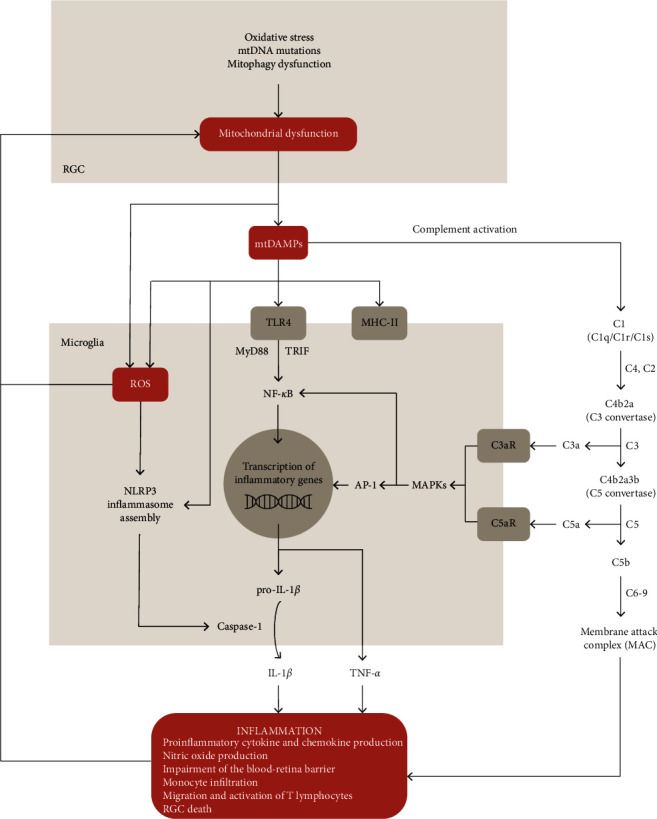Figure 2.

Neuronal mitochondrial damage-associated molecular patterns (mtDAMPs) can act as inducers of chronic inflammation in glaucoma. Mitochondrial-derived components from retinal ganglion cells (RGCs) can trigger inflammatory responses when recognized by complement molecules (classical pathway) and microglial pattern-recognition receptors, such as toll-like receptors (TLRs). TLR signaling induces the transcription of proinflammatory cytokines and chemokines (e.g., pro-IL-1β and TNF-α) through NF-κB. Inflammation triggered by mtDAMPs can further induce mitochondrial dysfunction, thereby amplifying a vicious cycle of inflammation. In addition to TLR signaling, the presentation of DAMPs through Class II MHC (MHC-II) molecules can further promote the induction of inflammation through T-cell activation. Mitochondrial products can also function directly as NLRP3 activators, which allows caspase-1-dependent release of IL-1β. AP-1: activator protein-1; MAPKs: mitogen-activated protein kinases; C3aR: C3a receptor; C5aR: C5a receptor.
